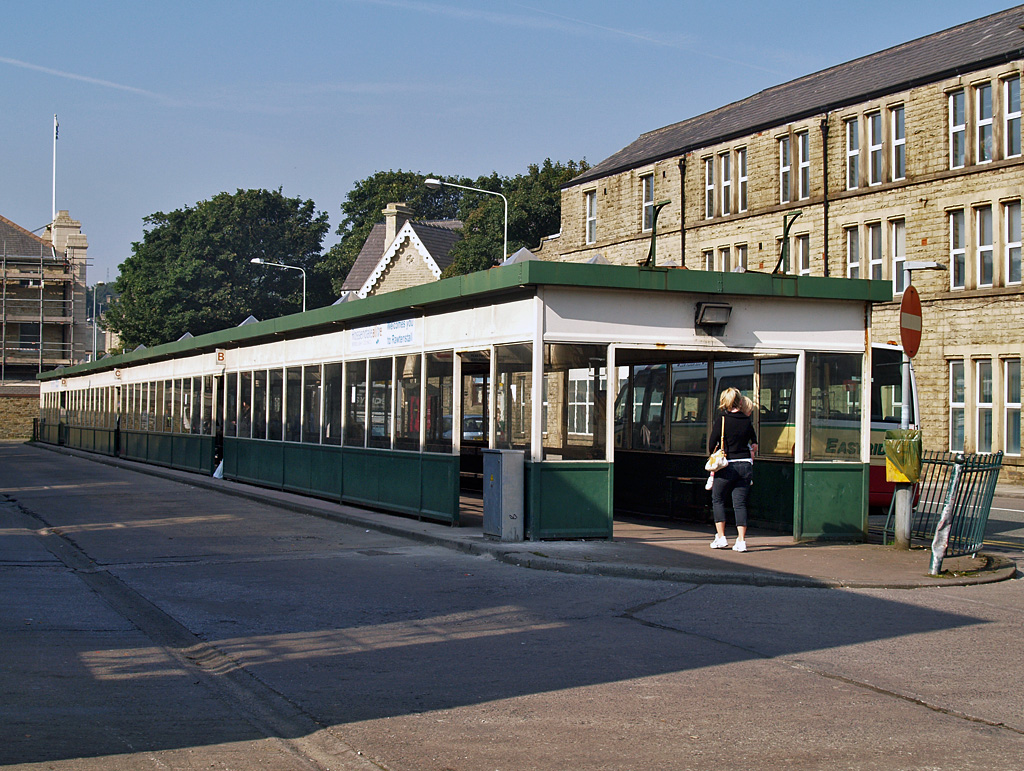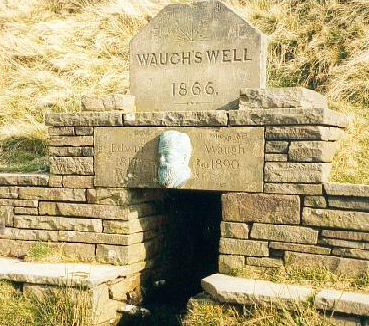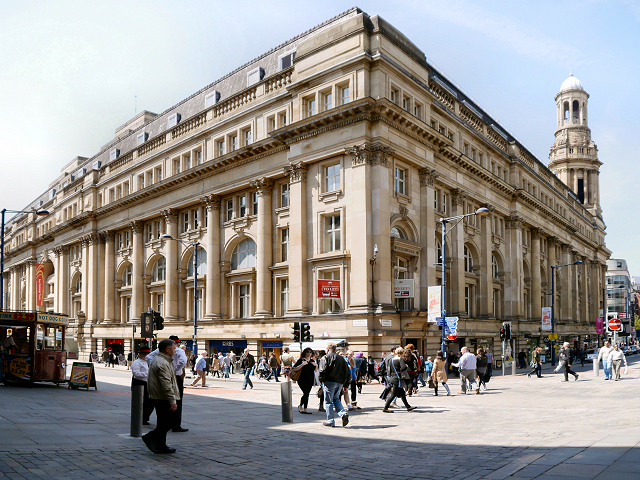|
Rawtenstall
Rawtenstall () is a town in the borough of Rossendale, Lancashire, England. The town lies 15 miles/24 km north of Manchester, 22 miles/35 km east of Preston and 45 miles/70 km south east of the county town of Lancaster. The town is at the centre of the Rossendale Valley. It had a population of 23,000. Toponym The name Rawtenstall has been given two possible interpretations. The older is a combination of the Middle English ''routen'' ('to roar or bellow'), from the Old Norse ''rauta'' and the Old English stall 'pool in a river' (Ekwall 1922, 92). The second, more recent one, relates to Rawtenstall's identification as a cattle farm in 1324 and combines the Old English ''ruh'' 'rough' and ''tun-stall'' 'the site of a farm or cow-pasture', or possibly, 'buildings occupied when cattle were pastured on high ground' History The earliest settlement at Rawtenstall was probably in the early Middle Ages, during the time when it formed part of the Rossendale Valley in the Hono ... [...More Info...] [...Related Items...] OR: [Wikipedia] [Google] [Baidu] |
Borough Of Rossendale
Rossendale () is a district with borough status in Lancashire, England, located along the River Irwell and spanning a large valley. It is located south of Burnley and east of Blackburn. The borough borders Greater Manchester to the south and borders the boroughs of Bolton, Bury and Rochdale. In the 2001 census the population of Rossendale was 65,652, spread between the towns of Bacup, Haslingden, Whitworth and Rawtenstall; the villages of Crawshawbooth, Edenfield, Helmshore and Waterfoot; and as well as Britannia, Broadclough, Chatterton, Cloughfold, Cowpe, Irwell Vale, Loveclough, Newchurch, Shawforth, Stacksteads, Stubbins, Turn and Weir. The population at the 2011 Census had risen to 67,922. The district was formed on 1 April 1974 under the Local Government Act 1972, from the municipal boroughs of Bacup, Haslingden, Rawtenstall, part of Ramsbottom Urban District and Whitworth Urban District. Rossendale is twinned with the German town of Bocholt, locate ... [...More Info...] [...Related Items...] OR: [Wikipedia] [Google] [Baidu] |
Rossendale Valley
The Rossendale Valley is in the Rossendale area of Lancashire, England, between the West Pennine Moors and the main range of the Pennines. The area includes the steep-sided valleys of the River Irwell and its tributaries (between Rawtenstall and Bacup), which flow southwards into Greater Manchester. The rivers cut through the moorland of the Rossendale Hills, generally characterized by open unwooded land, despite the ancient designation of "forest". History One of the earliest sites of historical interest in the valley is that of the dykes at Broadclough, which are associated with the Battle of Brunanburh. In late Middle Ages, the valley was part of the Royal Forest of Rossendale. The original medieval meaning of 'forest' was similar to a ‘preserve’, for example land that is legally kept for specific purposes such as royal hunting. So ‘forests’ were areas large enough to support species such as wolves and deer for game hunting and they encompassed other habitats su ... [...More Info...] [...Related Items...] OR: [Wikipedia] [Google] [Baidu] |
Waterfoot, Lancashire
Waterfoot is a historic mill town in the Borough of Rossendale between Rawtenstall and Bacup in Lancashire, England. The B6238 road from Burnley meets the A681 road, and Whitewell Brook the River Irwell. History Like the majority of the industrial communities in East Lancashire, Waterfoot expanded rapidly in the nineteenth century with the growth of industrialisation; it became a centre for felt-making, a process related to the predominant textile industry of the region. Before that, the main centre was Newchurch-in-Rossendale, that sits above Waterfoot to the north. The township of Newchurch stretched from Bacup to Rawtenstall, and in 1511 it was recorded as having a population of 1,000 people, served by the monks of Whalley Abbey. Waterfoot was on the Lancashire and Yorkshire Railway line between Bury and Bacup. This was dismantled in 1972 and the route is now hard to trace, although the tunnels can be seen in Thrutch Gorge or The Glen, a cutting to the east of the vil ... [...More Info...] [...Related Items...] OR: [Wikipedia] [Google] [Baidu] |
Newchurch, Lancashire
Newchurch is a village within the borough of Rossendale in Lancashire, England. It is around one mile east of Rawtenstall and half a mile north of Waterfoot. The village has a mixture of large detached houses and farmhouses, and smaller semi-detached housing on Staghills Council Estate where the majority of the village's population lives. There are two large manor houses, Heightside, a nursing home for those with mental disorders and Ashlands, a care home for the elderly. It is part of the Rossendale and Darwen constituency, with Jake Berry having been the Member of Parliament (MP) since 2010. History Newchurch is one of the earliest settlements in the Forest of Rossendale, the village developed around St Nicholas church, first built in 1511. The township of Newchurch stretched from Bacup to Rawtenstall, and in 1511 it was recorded as having a population of 1,000 people. The village is built on a hill, Seat Naze. On this hill there is a stone circle with many rumours circ ... [...More Info...] [...Related Items...] OR: [Wikipedia] [Google] [Baidu] |
Peter Whitehead (businessman)
Peter Whitehead (1793–1866) was a prominent business man in Rawtenstall, Lancashire. With his brothers Thomas and David David (; , "beloved one") (traditional spelling), , ''Dāwūd''; grc-koi, Δαυΐδ, Dauíd; la, Davidus, David; gez , ዳዊት, ''Dawit''; xcl, Դաւիթ, ''Dawitʿ''; cu, Давíдъ, ''Davidŭ''; possibly meaning "beloved one". w ... he established Thomas Whitehead and Brothers in 1815. Following the dissolution of Thomas Whitehead and Brothers in 1855, Whitehead built the Ilex Mill, Rawtenstall in 1856. He is buried in the same grave as his two brothers in the churchyard of Longholme Methodist Church. References {{DEFAULTSORT:Whitehead, Peter 1793 births 1866 deaths ... [...More Info...] [...Related Items...] OR: [Wikipedia] [Google] [Baidu] |
David Whitehead (businessman)
David Whitehead (11 December, 1790, Gambleside - 28 January, 1865) was a Lancashire businessman who set up in business with his brothers Thomas and Peter in 1815. He became a major figure in the Cotton industry, developing several mills in Rawtenstall. He was an active methodist and attended the third International Peace Congress International Peace Congress, or International Congress of the Friends of Peace, was the name of a series of international meetings of representatives from peace societies from throughout the world held in various places in Europe from 1843 to 185 ... held in Paris in 1849. He is buried in the same grave as his two brothers in the churchyard of Longholme Methodist Church. He had 11 children, of whom nine appear to have survived him. His will divided his property between five sons with provision for his widow and four daughters. Two of his sons were Thomas Hoyle Whitehead and John Ormerod Whitehead. References {{reflist 1790 births 1865 deaths Peo ... [...More Info...] [...Related Items...] OR: [Wikipedia] [Google] [Baidu] |
Thomas Whitehead (businessman)
Thomas Whitehead (1787–1859) was a prominent business man in Rawtenstall, Lancashire. With David and Peter Peter may refer to: People * List of people named Peter, a list of people and fictional characters with the given name * Peter (given name) ** Saint Peter (died 60s), apostle of Jesus, leader of the early Christian Church * Peter (surname), a sur ... established Thomas Whitehead and Brothers in 1815. He is buried in the same grave as his two brothers in the churchyard of Longholme Methodist Church. References {{reflist 1787 births 1859 deaths People from Rawtenstall ... [...More Info...] [...Related Items...] OR: [Wikipedia] [Google] [Baidu] |
Haslingden
Haslingden is a town in Rossendale, Lancashire, England. It is north of Manchester. The name means 'valley of the hazels' or 'valley growing with hazels'. At the time of the 2011 census the town (including Helmshore) had a population of 15,969. The town is surrounded by high moorland; 370 m (1215 ft) to the north; 396 m (1300 ft) Cribden to the east; 418 m (1372 ft) Bull Hill to the south.Murray's Lancashire Architectural Guide/Peter Fleetwood-Hesketh 1955 Haslingden is the birthplace of the industrialist John Cockerill (1790–1840) and the composer Alan Rawsthorne (1905–1971), and was the home for many years of the Irish Republican leader, Michael Davitt (1846–1906). Haslingden Cricket Club is a member of the Lancashire League. History There is some evidence of Bronze Age human presence in the area of Haslingden. Thirteen Stones Hill is west of the town and probably dates from about 3000BC. There is now just one stone visible. Part o ... [...More Info...] [...Related Items...] OR: [Wikipedia] [Google] [Baidu] |
Lancashire
Lancashire ( , ; abbreviated Lancs) is the name of a historic county, ceremonial county, and non-metropolitan county in North West England. The boundaries of these three areas differ significantly. The non-metropolitan county of Lancashire was created by the Local Government Act 1972. It is administered by Lancashire County Council, based in Preston, and twelve district councils. Although Lancaster is still considered the county town, Preston is the administrative centre of the non-metropolitan county. The ceremonial county has the same boundaries except that it also includes Blackpool and Blackburn with Darwen, which are unitary authorities. The historic county of Lancashire is larger and includes the cities of Manchester and Liverpool as well as the Furness and Cartmel peninsulas, but excludes Bowland area of the West Riding of Yorkshire transferred to the non-metropolitan county in 1974 History Before the county During Roman times the area was part of th ... [...More Info...] [...Related Items...] OR: [Wikipedia] [Google] [Baidu] |
Ilex Mill
Ilex Mill is a cotton mill built in 1856 by Peter Whitehead (businessman), Peter Whitehead in Rawtenstall, Lancashire. It reached its peak of production in 1895 when it had 50,000 spindles and 748 looms. However, by 1899 the building had been sold to Messrs Hoyle, Parker and Company who turned the premises into a shoe factory. The building was once again used for textile production in the 1930s, and by 1954 two associated companies, James Rothwell and Fabricade Ltd occupied the building, working alongside one another. Fabricade made bed spreads and bathroom sets there until 1981, when they shut the plant down with the loss of 60 jobs. The building was put on the market for £85,000. The Council developed plans to turn the mill into a new Town Hall for the Borough of Rossendale which had been formed in 1974. The plans, which also involved the Rawtenstall Civic Society, the Lancashire Constabulary and the local Chamber of Commerce. They included Council administrative offices, a cham ... [...More Info...] [...Related Items...] OR: [Wikipedia] [Google] [Baidu] |
Cottonopolis
Cottonopolis was a 19th-century nickname for Manchester, as it was a metropolis and the centre of the cotton industry. Background Early cotton mills powered by water were built in Lancashire and its neighbouring counties. In 1781 Richard Arkwright opened the world's first steam-driven textile mill on Miller Street in Manchester. Although initially inefficient, the arrival of steam power signified the beginning of the mechanisation that was to enhance the burgeoning textile industries in Manchester into the world's first centre of mass production. As textile manufacture switched from the home to factories, Manchester and towns in south and east Lancashire became the largest and most productive cotton spinning centre in the world using in 1871, 32% of global cotton production. Ancoats, part of a planned expansion of Manchester, became the first industrial suburb centred on steam power. There were mills whose architectural innovations included fireproofing by use of iron and ... [...More Info...] [...Related Items...] OR: [Wikipedia] [Google] [Baidu] |
Township (England)
In England, a township (Latin: ''villa'') is a local division or district of a large parish containing a village or small town usually having its own church. A township may or may not be coterminous with a chapelry, manor, or any other minor area of local administration. The township is distinguished from the following: *Vill: traditionally, among legal historians, a ''vill'' referred to the tract of land of a rural community, whereas ''township'' was used when referring to the tax and legal administration of that community. * Chapelry: the 'parish' of a chapel (a church without full parochial functions). *Tithing: the basic unit of the medieval Frankpledge system. 'Township' is, however, sometimes used loosely for any of the above. History In many areas of England, the basic unit of civil administration was the parish, generally identical with the ecclesiastical parish. However, in some cases, particularly in Northern England, there was a lesser unit called a township, being ... [...More Info...] [...Related Items...] OR: [Wikipedia] [Google] [Baidu] |






